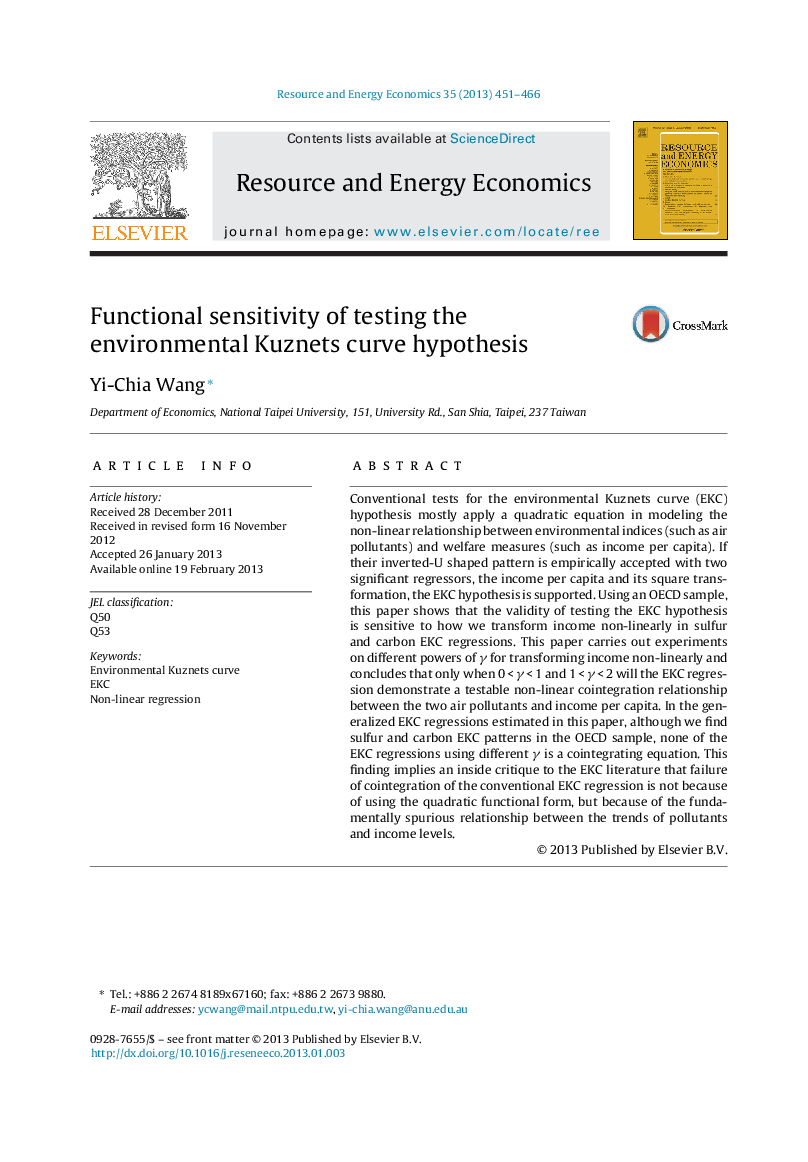| Article ID | Journal | Published Year | Pages | File Type |
|---|---|---|---|---|
| 985677 | Resource and Energy Economics | 2013 | 16 Pages |
Conventional tests for the environmental Kuznets curve (EKC) hypothesis mostly apply a quadratic equation in modeling the non-linear relationship between environmental indices (such as air pollutants) and welfare measures (such as income per capita). If their inverted-U shaped pattern is empirically accepted with two significant regressors, the income per capita and its square transformation, the EKC hypothesis is supported. Using an OECD sample, this paper shows that the validity of testing the EKC hypothesis is sensitive to how we transform income non-linearly in sulfur and carbon EKC regressions. This paper carries out experiments on different powers of γ for transforming income non-linearly and concludes that only when 0 < γ < 1 and 1 < γ < 2 will the EKC regression demonstrate a testable non-linear cointegration relationship between the two air pollutants and income per capita. In the generalized EKC regressions estimated in this paper, although we find sulfur and carbon EKC patterns in the OECD sample, none of the EKC regressions using different γ is a cointegrating equation. This finding implies an inside critique to the EKC literature that failure of cointegration of the conventional EKC regression is not because of using the quadratic functional form, but because of the fundamentally spurious relationship between the trends of pollutants and income levels.
► The regression validity of conventional test for the EKC hypothesis is questioned. ► The test of the EKC hypothesis is sensitive to different non-linear functional forms. ► None of the functional forms supports the EKC hypothesis in an OECD sample. ► SO2 and CO2 EKCs are fundamentally spurious.
